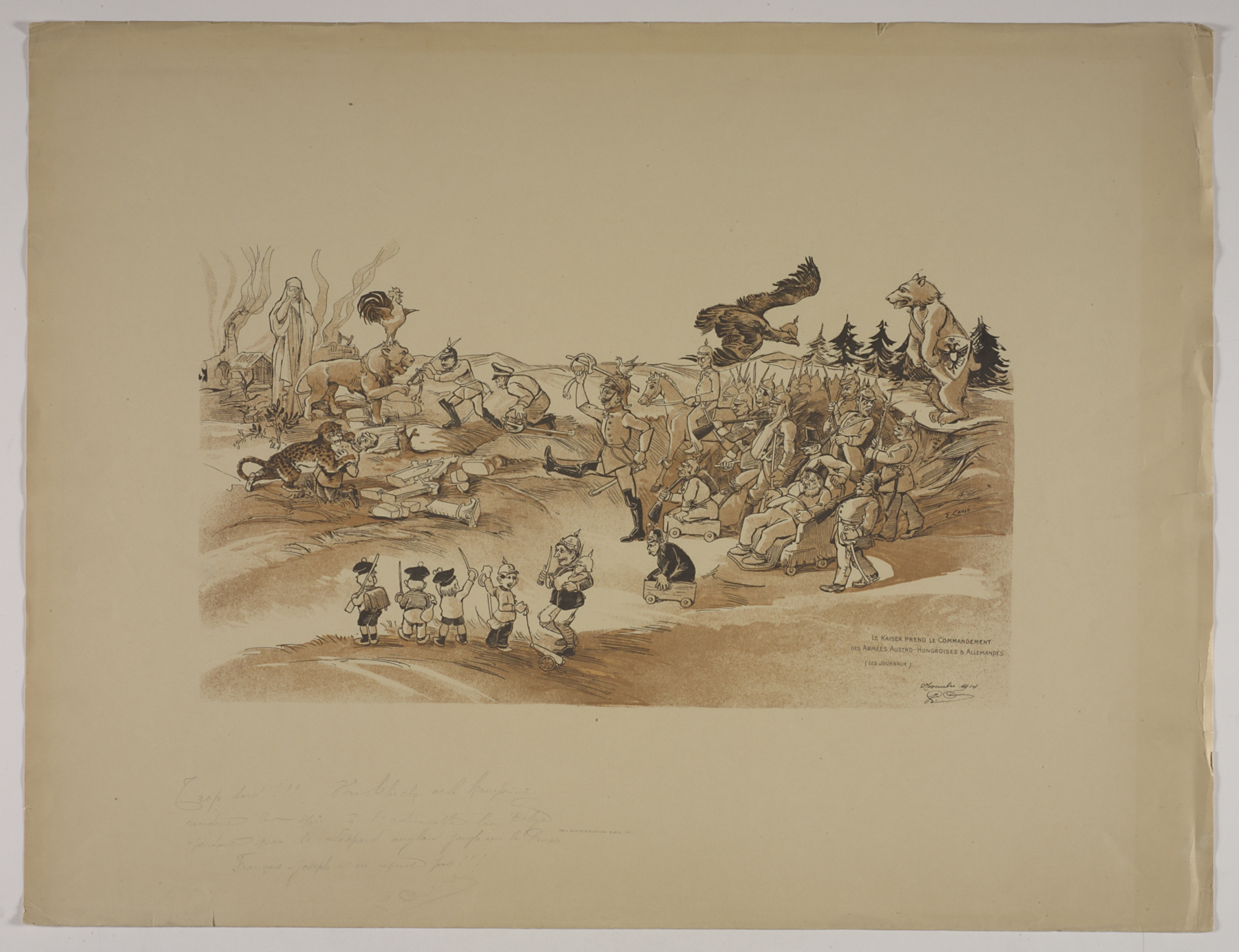Le Kaiser Prend Le Commandement Des Armées Austro-Hongroises & Allemandes (The Kaiser Takes Command of the Austro-Hungarian and German Armies), Emile Causé
Artwork Overview
Emile Causé, artist
1867–?
Le Kaiser Prend Le Commandement Des Armées Austro-Hongroises & Allemandes (The Kaiser Takes Command of the Austro-Hungarian and German Armies),
1914
Where object was made: France
Material/technique: color lithograph
Dimensions:
Image Dimensions Height/Width (Height x Width): 253 x 447 mm
Image Dimensions Height/Width (Height x Width): 9 15/16 x 17 5/8 in
Sheet/Paper Dimensions (Height x Width): 301 x 655 mm
Sheet/Paper Dimensions (Height x Width): 11 7/8 x 25 13/16 in
Mat Dimensions (Height x Width): 24 x 32 in
Image Dimensions Height/Width (Height x Width): 253 x 447 mm
Image Dimensions Height/Width (Height x Width): 9 15/16 x 17 5/8 in
Sheet/Paper Dimensions (Height x Width): 301 x 655 mm
Sheet/Paper Dimensions (Height x Width): 11 7/8 x 25 13/16 in
Mat Dimensions (Height x Width): 24 x 32 in
Credit line: Gift of Eric G. Carlson in honor of Stephen, Diane, Ejae, Emily, and Caitlin Goddard
Accession number: 2004.0166
Not on display
If you wish to reproduce this image, please submit an image request

